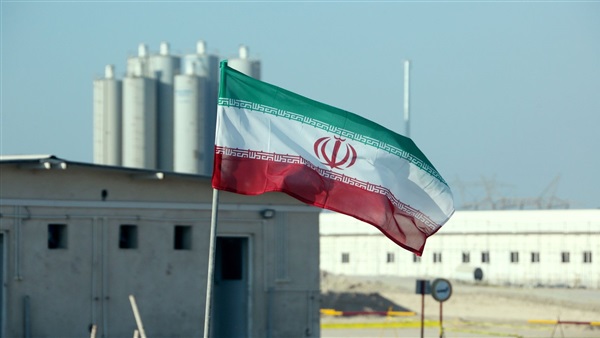Iran in 2020: Assassinations, sanctions and internal crises

The year 2020 began with sadness for the Iranian regime, as
it started in early January with the assassination of one of its most important
figures, Quds Force commander Qassem Soleimani, an event that caused a shock
within Iranian political circles.
Assassination of the mullahs' symbols
On January 3, 2020, an American drone strike targeted the
car of Qassem Soleimani near Baghdad airport, along with the leader of the
Iraqi Popular Mobilization Forces (PMF), Abu Mahdi al-Muhandis. This event had
a great impact, as Soleimani was one of the most important military figures for
the mullah regime. With his death, the regime lost one of its most important
leaders who worked in recent years to “export the revolution” by providing
support to many terrorist groups loyal to Iran in the countries of the region.
The Quds Force commander was a symbol of the influence of
the mullahs and their military incursion into the Middle East, and the regime
relied on him completely in order to threaten the interests of the United
States in the region, which caused Washington to set its sights on targeting
him.
Several days after the assassination of Soleimani, Iran
sought to strike the United States by targeting American bases in Iraq.
However, luck did not favor the Iranian regime, as Revolutionary Guard missiles
targeted a Ukrainian airliner by mistake, killing all 176 people on board.
Just as the year 2020 began with the assassination of
Soleimani, it ended with the assassination of Mohsen Fakhrizadeh, one of Iran's
most prominent nuclear scientists, and in the same way, by targeting his car
near the capital, Tehran, on November 27.
Although Tehran has not yet reached the perpetrators of this
incident, it has pointed the finger at Israel, and the Iranian parliament has
even approved a new law stipulating an increase in the level of uranium
enrichment.
Explosion of nuclear installations
The year 2020 can also be called the year of explosions in
Iran, due to the occurrence of many explosions starting from June, when the
country witnessed explosions at nuclear and military facilities, the most
important of which was the explosion of the Natanz nuclear facility and the
Khojir military industries site. It is strange that the Iranian regime did not
mention the real reasons behind these explosions, except that in some
incidents, such as the Natanz explosion, it pointed the fingers at the United
States and Israel.
Corona and the hardliners elections
In February 2020, Iran began preparing for parliamentary
elections, and this time Supreme Leader Ali Khamenei set his sights on
appointing the hardliners. Indeed, the Guardian Council was his tool in this,
as the current parliament gained a large percentage of hardliners at the
expense of the reformists despite the objection of the country's president,
Hassan Rouhani.
However, in the end, the hardliners won the majority in the
parliament, headed by Mohammad Bagher Ghalibaf, a former Revolutionary Guard
commander. After the inauguration of parliament, Rouhani faced numerous threats
from the hardliners, who sought to dismiss him and isolate him twice due to his
failures in domestic and foreign policy, nut Khamenei intervened to stop the
operation at the last moment.
While the regime was preparing for parliamentary elections,
the corona pandemic appeared, but citizens were not afraid to go to the polls,
as the government denied rumors about the spread of the virus in the country,
which led to a large spread inside the country until the number of infections
exceeded one million cases.
Year of executions
The year 2020 can also be described as the year of
executions in Iran, as the mullahs carried out many executions against
opponents. Despite the economic crises and the corona pandemic, the regime did
not hesitate to exert pressure on Iranians and suppress them, including with
arbitrary executions, which sparked rejection in Europe. Wrestling champion
Navid Afkari was executed in September for allegedly participating in anti-government
demonstrations in 2018, in addition to the execution of Ruhollah Zam, an
Iranian opposition journalist who was arrested by Tehran last December for
allegedly being anti-revolutionary and spying for foreign parties.
Arms embargo on Iran
The year 2020 enabled Iran to win, albeit for a short
period, over Washington, which sought to extend the arms embargo resolution
imposed on Iran under the nuclear agreement. The members of the UN Security
Council refused Washington’s announcement to extend the arms embargo on Tehran
that ended on October 18 and to activate the “snapback” trigger mechanism to
impose UN sanctions.
But the Iranian victory did not last long, as Washington
extended and tightened US sanctions on Iran and imposed more sanctions on
Iranian people and institutions, which led to the collapse of the Iranian
economy and the deterioration of the country's local currency. At the end of
the year, the mullah regime pinned its hopes on US President-elect Joe Biden to
get rid of those sanctions, especially since Biden previously announced that it
is possible to return to the nuclear agreement after his predecessor, Donald
Trump, withdrew from it in May 2018.





